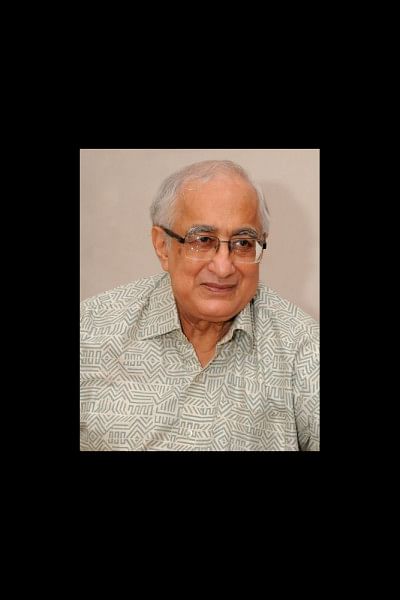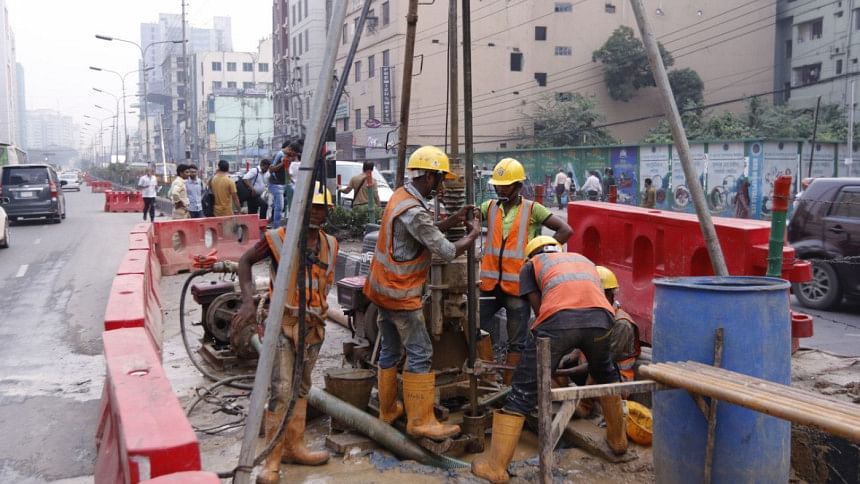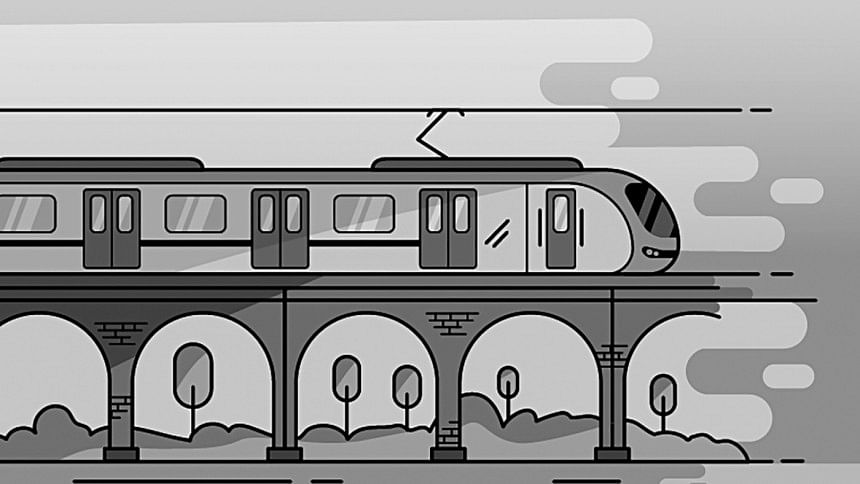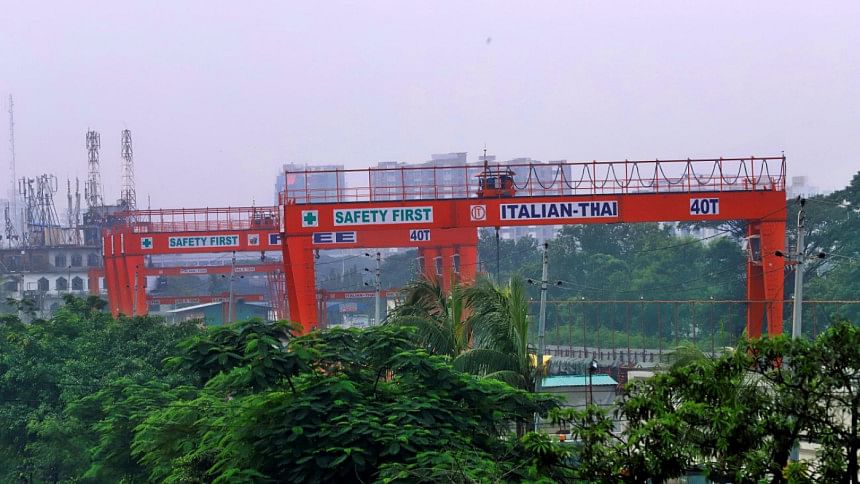'Existing policies cover most issues related to transportation, but very few of them have been implemented'

How did the Strategic Transport Plan (STP) come into formulation? Give us a brief history.
Dhaka Urban Transportation Project was launched in 1999 with financial assistance from World Bank to address traffic problems in Dhaka city. In 2004, another study was launched with support from World Bank to prepare Strategic Transport Plan (STP) for Dhaka city with a timeframe of 20 years. The work was awarded to an American consulting firm, Louis Berger Inc., with Bangladesh Consultants Limited (BCL) as its local associate. The study was overseen by a government agency called Dhaka Transportation Co-ordination Board (DTCB - now renamed DTCA). As the study was progressing, I was requested by the Executive Director of DTCB to be the head of an advisory committee consisting of representatives from relevant government agencies, professional bodies (Institutions of Engineers, Institute of Architects, Bangladesh Institute of Planners), retired senior government officials, heads of relevant government agencies and representatives of related national level trade bodies. As the consultants were carrying out data collection and analysis, they used to submit progress reports and interim reports outlining some of the recommendations. A computer model was developed by the consultants with advice from faculty members of Civil Engineering Department through BRTC, BUET. The advisory committee used to review the reports and give its comments. The initial recommendations of the consultants included six Bus Rapid Transit (BRT) routes and the improvement of the existing road network.
The advisory committee opined that with the limited capacity of BRT (maximum 20,000 passengers per hour), it would not be possible to handle the large number of passengers using public transport for a city with a likely population of about 25 million in the year 2025. Consequently, the Committee recommended that instead of BRT, all the six routes should have Mass Rapid Transit (MRT) lines. This was incorporated in the final report of the consultants, with three MRT lines with a capacity of about 65,000 passengers per hour, and three BRT lines, which could be converted to MRT lines in future.
There were a number of transport policy guidelines, one of which was to make the footpaths user-friendly for pedestrians. The other major recommendation was to introduce route franchising for bus routes so that buses operating in the same route do not compete with each other for attracting passengers, leading to traffic congestion and accidents. Another recommendation was to strengthen the regulatory body (DTCB) so as to enable it to eliminate the conflicts among some of the projects initiated and implemented by a large number of government agencies. The STP reports were submitted by the consultants to the government in 2005. The advisory committee also submitted a separate report which included observations and recommendations, some of which differed with those of the consultants. It also suggested that any project taken up in future, which is not conforming to the STP recommendations, should be analysed with great care. Unfortunately, the government was indecisive as to whether the recommendations of the STP should be accepted or not.

I remember attending a number of meetings convened by the Ministry of Communications in 2006-07 which ended without any decision. It was in February 2008, when in a meeting of the advisory council of the caretaker government, the STP reports were given the seal of approval and the ball started rolling. The government of Japan came forward with financial assistance through JICA and carried out a follow-up study, Dhaka Urban Transport Network Development Study (DHUTS), which reviewed the STP reports and suggested some modifications. The Japanese consultants tried to determine the priorities among the MRT lines and concluded that the first line to be constructed would be MRT-6, starting from Uttara in the north going through the city (Mirpur, Agargaon, Shahbagh) and ending in Jatrabari. Unfortunately, by that time the government had gone ahead with the construction of a flyover along parts of the route (from Chankharpul to Jatrabari). The alignment of MRT-6 was revised to go through Topkhana Road and end in Shapla Chottor in front of Bangladesh Bank in Motijheel. The Japanese consultants also recommended that MRT-6 should be elevated throughout its whole alignment; this was done to reduce the cost of construction and operation, although elevated structures along the whole route would obstruct the views of the buildings along the route.
Further complications arose when in 2011 the Bangladesh Air Force objected to the alignment going through Bijoy Sharani to the south of Tejgaon Airport, which had been handed over earlier to the Civil Aviation Authority of Bangladesh, to be operated as a STOL (short take-off landing) airport. However, later the government changed its decision and it was handed back to the Air Force.
Objection from the Air Force was raised due to the conflict with the vertical clearance requirement of aircrafts taking off and landing (although the top of the dome of the already constructed Bangabandhu Novo Theatre, which is right along the centre line of the runway, has an elevation higher than that required by MRT). These changes after finalisation of design were resented by JICA. However, JICA was finally persuaded to change the alignment and agreed to the current route which is being followed, viz. through Khejurbagan, east of National Parliament, and turning toward Farmgate south of Khamarbari. All these changes in the alignment have resulted in a delay of two years in implementation, which is going on now. In the meantime, another study was launched with support from JICA to thoroughly review the STP; the Japanese consultants collected more recent data and submitted a revised STP, known by its acronym RSTP.
In addition to MRT and BRT, other recommendations of STP include improvement of some of the existing roads. A total of 54 major links were identified in 2005 and it was recommended that these should be given priority in development. Some elevated expressways or flyovers were also recommended but it was also recognised that in many cities around the world, these elevated expressways have failed to provide a long-term and sustainable solution. Although not explicitly included in the terms of reference for STP, it was recommended that taking advantage of the fact that Dhaka is surrounded by rivers on almost all sides, the circular navigation system should be introduced. One of the major benefits would be to reduce the pressure on Sadarghat, Chawkbazar, Badamtoli, as the major commercial hubs. Unfortunately, the terms of reference for the consultants did not include a study of commuter rail system for Dhaka.
What is its current implementation status?
MRT-6 construction has already started and it is expected that the first phase starting from Uttara Phase 3 to Agargaon should be completed by the end of this year. The complete project will hopefully be implemented by 2021. The detailed feasibility studies for some of the other routes identified in RSTP and design of the exact alignment for the routes are being finalised. Unlike MRT-6, which would be elevated all throughout, the other MRT lines are going to be partly underground in central Dhaka and elevated in other areas. Bangladesh Bridge Authority (BBA) has commissioned a design study for some of the subway routes. In most of the large cities in the world, the road system is based on a few circular ring roads and a few radial connections. RSTP has also recommended three ring roads and eight radial connections towards the centre of the city. These would have links with our eight national highways. A feasibility study for the middle ring road has been commissioned by BBA.
What are the existing challenges? Are there adequate projects under STP to tackle the traffic congestion in Dhaka?
The number one challenge is acquisition of land along the 'Right of Way' for all these new roads and MRT alignments and stations. Land prices are abnormally high in Dhaka city. Acquisition of land which requires displacement and resettlement of affected people is time-consuming, expensive and quite often faces legal hurdles. In fact, the alignment of the under-construction elevated expressway had to be changed a number of times due to objections from various government agencies as well as people affected by the project and they were supported by local political representatives.
The second challenge is relocation of utilities. Within Dhaka city, there are underground sewer lines, water supply lines, electricity and telecommunication lines, and gas pipelines. Unfortunately, accurate layout maps for these utility lines are unavailable. These buried lines have to be identified and relocated, which adds to cost and time.
Another major challenge is minimising disruption of existing pedestrian and vehicle traffic during construction and ensuring the safety of existing road users. Mobilising financial resources for implementing these projects, many of which are not viable as PPP projects, requires funding from our own government and from our development partners. Convincing our development partners, most of whom have their own priorities in lending, is difficult and time-consuming.

I think if all the projects initially identified in STP and later recommended in RSTP are implemented, and the policy recommendations in STP are implemented, the traffic situation in Dhaka city would improve significantly. The future scenario, maybe by 2030, would include implementation of most of the MRT and BRT projects. Implementation of some of the policy measures recommended in STP, recognising that public transport system has to be given priority and measures to ensure ease of use of personalised NMT (e.g. bicycles), would be the mainstay in ensuring easy mobility of people. A well-designed bus system with route franchising should lead to some immediate improvement. Similarly, a transparent policy on parking of vehicles with the objective of freeing the main arteries to ensure a smooth flow of traffic should lead to significant improvement. Ensuring pedestrian-friendly footpaths throughout the whole city would require relatively modest investment and will motivate the road users to avoid using buses or rickshaws for short distance travel as is prevalent now. An automatic traffic light system, with traffic policemen not overriding the traffic lights, along with enforcement of existing traffic laws, should also lead to significant improvement.
Since several projects are running at once (Mass Rapid Transits, Dhaka Elevated Expressway), is there proper co-ordination among them?
Officially, Dhaka Transport Coordination Authority (DTCA) has been given the responsibility for coordinating all these projects. It has been found that the large number of government agencies involved in planning, design, construction and operation of many of the projects go ahead without DTCA approval. In some cases, this has led to conflicts among some of these projects.

What steps should the government take to ensure better efficiency of the STP? Are the existing policies sufficient?
DTCA should be strengthened and managed by professionals who have the knowledge and experience in transportation planning, design and construction. There should be an integrated computer model simulating the present and future traffic so that the impact of any future projects could be simulated and the conflicts identified. No project should be taken up without a proper feasibility study as has been done in some of the past projects. The personnel deployed for managing the projects should have knowledge and experience in construction and relevant technical issues. The operational responsibility for managing traffic should be given to personnel who have been specially trained for this and are knowledgeable about traffic engineering.
I think the existing policies cover most of the issues related to transportation. Unfortunately, very few of the policies have been implemented. It should also be remembered that the policies need to be updated after a thorough review, taking into account some of the recent developments. For example, till a few years back the app-based ride-hailing services such as Uber and Pathao, or ride-sharing services like Obhai, Obon were non-existent. As far as I understand, the government is yet to come up with a policy to regulate their services. However, it should be recognised that they have already started playing an important role in providing facilities to the users and in the long run may reduce the motivation of owning personal vehicles. Moreover, they are providing employment opportunities to a large number of people. Similarly, recent years have seen a lot of development in autonomous vehicles. It is predicted that within the next few years, there will be driverless cars in many cities of the world. These would revolutionise the future of transport and obviously would need the formulation of appropriate policies.

 For all latest news, follow The Daily Star's Google News channel.
For all latest news, follow The Daily Star's Google News channel. 



Comments